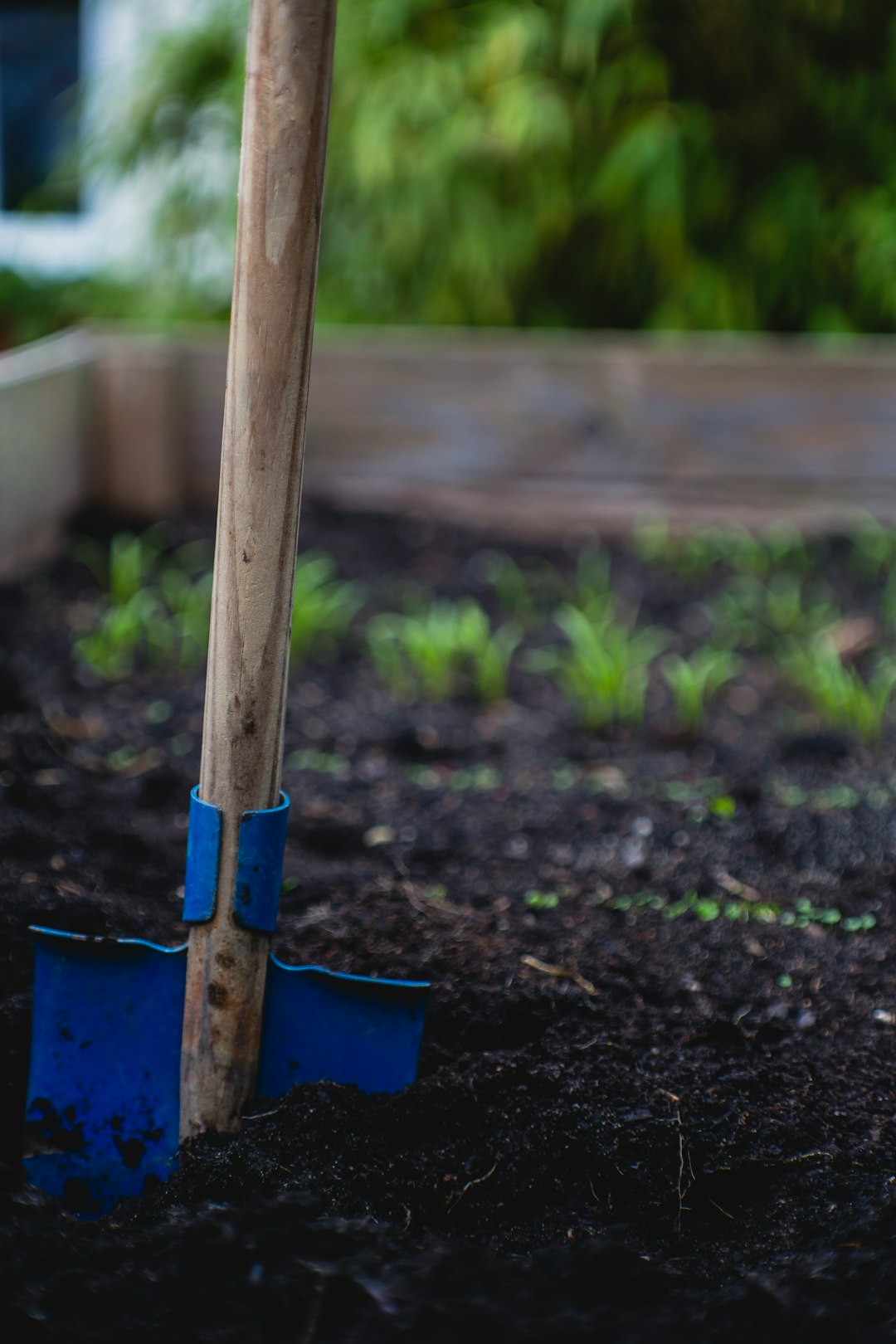Support our educational content for free when you purchase through links on our site. Learn more
Community gardens are more than just patches of green in urban landscapes; they are vibrant hubs of economic activity that can transform neighborhoods and uplift communities. Did you know that every $1 invested in a community garden can yield an astonishing $6 in fresh produce? This remarkable return on investment not only helps families save on groceries but also boosts local economies and enhances property values. In this article, we’ll explore the economic impact of community gardens and reveal 10 surprising insights that showcase their multifaceted benefits. From job creation to improved food security, the story of community gardens is one of resilience and opportunity.
As we dig deeper, you’ll discover how these green spaces can be a lifeline for communities, especially in urban areas where access to fresh food is limited. So, what are the real economic benefits of community gardens? Let’s find out!
Key Takeaways
- Significant Savings: Community gardens can save families between $70 to $380 annually on food costs.
- Property Value Boost: Neighborhoods with community gardens can see property values increase by up to 9.4% over five years.
- Job Creation: These gardens create jobs in management, maintenance, and local produce sales.
- High ROI: For every $1 invested, community gardens can yield $6 in fresh produce.
- Food Security: They play a crucial role in enhancing food security, especially in urban areas.
- Environmental Benefits: Community gardens improve air quality and promote biodiversity, contributing to urban sustainability.
If you’re interested in starting your own community garden or enhancing your gardening tools, check out our recommended Garden Tools and Seeds and Plants to get started on your green journey! 🌿
Table of Contents
Quick Tips and Facts
Understanding Community Gardens: A Historical Perspective
The Economic Benefits of Community Gardens
How Community Gardens Boost Local Economies
Community Gardens and Job Creation: A Green Opportunity
Health Benefits and Economic Savings: The Double Whammy
Community Gardens and Food Security: A Sustainable Solution
Environmental Impact: Greening Urban Spaces
Social Cohesion and Community Development: Building Bonds
Matching Gift Opportunities: Funding Your Garden
Success Stories: Communities Thriving Through Gardening
Challenges Facing Community Gardens: Navigating Obstacles
Future Trends: The Evolution of Community Gardens
Conclusion
Recommended Links
FAQ
Reference Links
Quick Tips and Facts
- Community gardens can save families between $70 to $380 on food annually! 🌱
- They can increase surrounding property values by up to 9.4% over five years. 🏡
- Every $1 invested in a community garden can yield $6 in fresh produce. 💰
- Community gardens can significantly improve food security, especially in urban areas. 🍅
- They foster social connections, enhancing community bonds and reducing crime. 🤝
Understanding Community Gardens: A Historical Perspective
Community gardens have a rich history, dating back to the 1893 economic recession in Detroit, where they were known as “Pingree’s Potato Patches.” These gardens were a lifeline for families struggling to afford food. Fast forward to the World Wars, when Victory Gardens flourished, encouraging citizens to grow their own food to support the war effort. Today, community gardens are not just about food; they are about community resilience, sustainability, and social cohesion.
Key Historical Milestones
| Year | Event |
|---|---|
| 1893 | Pingree’s Potato Patches in Detroit |
| 1917-1945 | Victory Gardens during WWI and WWII |
| 1970s | Grassroots movements promoting communal gardening |
These gardens have evolved into vital spaces that address food insecurity, promote environmental sustainability, and enhance community well-being.
The Economic Benefits of Community Gardens
Community gardens are not just patches of green; they are economic powerhouses! Let’s dive into the various ways they impact local economies.
1. Food Savings
Community gardens can lead to significant food savings, with estimates ranging from $70 to $380 per season. This is especially crucial for families on tight budgets. By growing their own produce, families can stretch their grocery bills further.
2. Increased Property Values
Research shows that neighborhoods with community gardens see property values rise by as much as 9.4% over five years. The aesthetic appeal and increased community engagement contribute to this boost. 🏡
3. Job Creation and Skill Development
Community gardens offer opportunities for skill-building in areas like food production, planning, and even business management. They can also create jobs, particularly when gardens sell produce at local farmers’ markets.
4. Investment Yields
Did you know that every $1 invested in a community garden can yield $6 in fresh produce? This sixfold return on investment is particularly beneficial in low-income neighborhoods where access to fresh food is limited.
How Community Gardens Boost Local Economies
Community gardens can serve as catalysts for local economic growth. Here’s how:
Supporting Local Businesses
- Farmers’ Markets: Many community gardens establish stands at local farmers’ markets, stimulating the local economy and providing fresh produce to the community.
- Local Employment: Gardens often hire local residents for maintenance and operation, creating jobs and fostering a sense of ownership.
Reducing Municipal Costs
- Community gardens can be less expensive to maintain than traditional park spaces. With 80% of the costs often covered by volunteer labor, municipalities can save money while beautifying neighborhoods.
Enhancing Community Engagement
- Gardens serve as venues for community events, workshops, and educational programs, fostering engagement and cooperation among residents.
Community Gardens and Job Creation: A Green Opportunity
Community gardens are more than just a source of fresh produce; they are also a springboard for job creation. Here’s how they contribute to the workforce:
Skill Development
Participants in community gardens often learn valuable skills such as:
- Agricultural Techniques: Understanding sustainable farming practices.
- Business Acumen: Managing sales at farmers’ markets or community-supported agriculture (CSA) programs.
Job Creation
- Garden Managers: Some gardens hire managers to oversee operations, creating formal employment opportunities.
- Seasonal Workers: During peak seasons, gardens may need additional hands for planting and harvesting.
Health Benefits and Economic Savings: The Double Whammy
The health benefits of community gardens are well-documented and directly tie into economic savings. Here’s how:
Physical and Mental Health Improvements
- Gardening promotes physical activity, which can lead to improved endurance, strength, and flexibility. 🌿
- Studies show that community gardening can reduce anxiety and depression, contributing to overall well-being.
Economic Savings
- Access to fresh produce can lead to healthier eating habits, reducing healthcare costs associated with diet-related illnesses.
Community Gardens and Food Security: A Sustainable Solution
Food insecurity is a pressing issue, with over 38 million people in the U.S. struggling to access sufficient food. Community gardens play a crucial role in addressing this challenge.
Providing Fresh Produce
- Community gardens can fill the meal gap by offering fresh, healthy food at little or no cost. This is especially vital in urban areas where grocery stores may be scarce.
Building Resilience
- By growing their own food, community members become more resilient to economic fluctuations and food price increases.
Environmental Impact: Greening Urban Spaces
Community gardens are not just beneficial for people; they also have a significant environmental impact.
Improving Air and Soil Quality
- Gardens enhance local ecosystems, improving air quality and promoting biodiversity. 🌍
Mitigating Urban Heat
- Green spaces can help reduce the urban heat island effect, making cities more livable.
Social Cohesion and Community Development: Building Bonds
Community gardens are powerful tools for fostering social connections and building community.
Creating a Sense of Belonging
- Participants often report higher levels of well-being compared to individual gardeners. The shared experience of gardening fosters friendships and community ties. 🤗
Reducing Crime
- By transforming vacant lots into vibrant gardens, communities can deter criminal activity and enhance neighborhood safety.
Matching Gift Opportunities: Funding Your Garden
Funding is often a challenge for community gardens. However, many organizations offer matching gift opportunities that can help.
How to Secure Funding
- Research Local Grants: Many local governments and nonprofits provide grants for community gardening initiatives.
- Engage Local Businesses: Partnering with local businesses for sponsorship can provide financial support and resources.
Success Stories: Communities Thriving Through Gardening
Let’s take a look at some inspiring success stories from community gardens across the country.
Sylhet Farm
- One New Humanity’s community garden produced around 600 lbs of fruits and vegetables in 2021, distributing them for free or at low cost to residents. This initiative not only provided food but also fostered community spirit.
Urban Oasis
- In Chicago, the Urban Oasis project transformed vacant lots into productive gardens, improving local food access and creating jobs for residents.
Challenges Facing Community Gardens: Navigating Obstacles
While community gardens offer many benefits, they also face challenges that need to be addressed.
Land Access
- Securing land for community gardens can be difficult, especially in urban areas where real estate is at a premium.
Sustainability
- Maintaining gardens over the long term requires ongoing community engagement and funding.
Future Trends: The Evolution of Community Gardens
As we look to the future, community gardens are likely to evolve in exciting ways.
Incorporating Technology
- Many gardens are beginning to use technology for better management and efficiency, such as using apps for scheduling and tracking produce.
Focus on Education
- Future community gardens may place a greater emphasis on educational programs, teaching sustainable practices and nutrition.
Conclusion

Community gardens are more than just a way to grow food; they are vital economic, social, and environmental assets. They save families money, boost local economies, and foster community bonds. If you’re considering starting a community garden, check out our guide on How to Start a Community Garden: 7 Essential Steps for Success 🌱.
Recommended Links
- Benefits of Community Gardens
- Community Garden Events
- Community Garden Policies
- Garden Design Ideas
- Garden Maintenance Tips
FAQ

Q: How can I start a community garden?
A: Check out our detailed guide on How to Start a Community Garden.
Q: What are the benefits of community gardens?
A: Community gardens provide fresh produce, enhance property values, and foster social connections.
Reference Links
- One New Humanity: The Benefits of Community Gardens
- 517 Magazine: Five Economic Benefits from Community Gardens
- Gardening Know How: Economic Benefits of Community Gardens
Conclusion

In conclusion, community gardens are a remarkable blend of economic, social, and environmental benefits. They not only provide fresh produce but also enhance property values, create jobs, and foster community ties. The positive impacts on food security and health are undeniable, making them a vital resource in urban areas. As we’ve explored, these gardens are more than just patches of green; they are thriving ecosystems that contribute to the well-being of individuals and communities alike. 🌱
If you’re inspired to start your own community garden, remember to check out our guide on How to Start a Community Garden: 7 Essential Steps for Success 🌱.
Recommended Links
-
Books on Community Gardening:
-
Gardening Products:
- Garden Tools: Amazon | Walmart | Gardena Official Website
- Seeds and Plants: Burpee | Etsy
FAQ

What are the direct financial benefits of community gardens for gardeners?
Financial Benefits Explained
Community gardens provide direct financial benefits by reducing grocery bills. Gardeners can save between $70 to $380 annually by growing their own fruits and vegetables. Additionally, the skills learned in gardening can lead to job opportunities in agriculture and food-related industries. By selling excess produce at local markets, gardeners can also generate income, further enhancing their financial situation.
How do community gardens affect property values in surrounding neighborhoods?
Impact on Property Values
Research indicates that community gardens can increase property values by up to 9.4% over five years. This increase is attributed to the improved aesthetics of the neighborhood, enhanced community engagement, and the overall perception of safety and vibrancy that gardens bring to an area. Homebuyers often seek out neighborhoods with green spaces, making these gardens a valuable asset for local real estate.
Do community gardens stimulate local economic development and job creation?
Economic Development and Job Creation
Absolutely! Community gardens stimulate local economies by creating jobs in garden management, maintenance, and produce sales. They often serve as venues for farmers’ markets, which can attract foot traffic and support local businesses. Furthermore, the skills developed through gardening can lead to employment opportunities in agriculture, landscaping, and food production.
What is the role of community gardens in addressing food insecurity and reducing healthcare costs?
Addressing Food Insecurity
Community gardens play a crucial role in combating food insecurity by providing fresh produce to low-income families. This access to healthy food can lead to better nutrition and lower healthcare costs associated with diet-related illnesses. By growing their own food, community members can reduce their reliance on expensive grocery store produce, ultimately improving their overall health and financial well-being.
How do community gardens contribute to environmental sustainability and reduce municipal expenses?
Environmental Sustainability and Cost Reduction
Community gardens enhance environmental sustainability by improving air quality, promoting biodiversity, and reducing urban heat. They also help municipalities save money by transforming vacant lots into productive spaces, which can lower maintenance costs associated with litter and crime. By reducing the need for extensive park services and utilizing volunteer labor, community gardens provide a cost-effective solution for urban greening.

